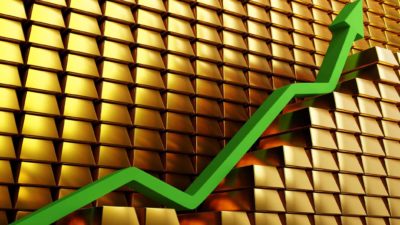With the 2024 financial year fading into the background and FY 2025 stretching ahead, we turn our focus to what investors might expect from ASX gold shares.
As you may be aware, FY 2024 was a banner year for most gold miners, thanks to the surging gold price.
The yellow metal is currently fetching US$2,361 per ounce. That's up almost 23% from the US$1,925 that same ounce was trading for this time last year.
Bullion's strong performance has offered some heady tailwinds for ASX gold shares. In fact, Ora Banda Mining Ltd (ASX: OBM) rocketed 162% in 12 months amid strong gold exploration results, leaving the 8.3% gains posted by the All Ordinaries Index (ASX: XAO) far behind.
The rising gold price has also helped boost the performance of the big S&P/ASX 200 Index (ASX: XJO) gold producers like Northern Star Resources Ltd (ASX: NST), Newmont Corp (ASX: NEM), Gold Road Resources Ltd (ASX: GOR) and Evolution Mining Ltd (ASX: EVN).
But that's the financial year just past.
Now, what can investors expect from ASX gold shares in the year ahead?
Will ASX gold shares outshine again in FY 2025?
Before we dive in, there are obviously many company-specific factors that will impact each individual ASX gold share. Those include variables like the weather in their mining locations, production levels, cost management, and how they progress with exploration and new project development.
But the price they receive for the yellow metal they dig from the ground is one factor that will impact every ASX gold share.
As for what we can expect from the gold price, we defer to the World Gold Council (WGC).
In their mid-year outlook report, the WGC noted, "Gold has thus far benefitted from continued central bank buying, Asian investment flows, resilient consumer demand, and a steady drumbeat of geopolitical uncertainty."
Looking ahead to FY 2025, ASX gold shares may face steady prices.
"Current market trends indicate a rangebound performance from its current levels during H2… The global economy, as well as gold, seem to be waiting for a catalyst," the WGC said.
The report pointed out that more than 40% of global gold demand stems from consumers.
As such, "The sharp upward trend in the gold price has dampened demand in some markets such as India and China. But positive economic growth can counteract some of this effect."
What could drive the gold price higher?
The World Gold Council indicated a number of catalysts that could send the gold price higher in FY 2025 and support further gains for ASX gold shares.
According to the report:
For gold, we believe the catalyst could come from falling rates in developed markets, that attract Western investment flows, as well as continued support from global investors looking to hedge bubbling risks amid a complacent equity market and persistent geopolitical tensions.
Gold, which pays no yield itself, tends to perform better in low or falling interest rate environments.
Western retail investors have also largely been missing from the gold rally to date, with gold ETFs witnessing outflows.
The WGC said this "suggests that, unlike previous periods when gold broke record highs, the market is still not saturated and could see another leg up".
Atop setting interest rates, central bank demand also has an important impact on the gold price, and by connection ASX gold shares.
"We estimate that [central bank demand] contributed at least 10% to gold's performance in 2023 and potentially around 5% so far this year," the WGC said. "Questions as to whether demand from the official sector may lose momentum. But we still expect central bank demand to remain above trend this year."
And, while we hope global tensions ease in FY 2025, ASX gold shares would likely get a lift if geopolitical risks heat up.
According to the WGC report:
Geopolitical risk is particularly difficult to predict and may come from where it's least expected. What is true, however, is that gold reacts to geopolitics, adding 2.5% for every 100-points the Geopolitical Risk (GPR) Index moves up.








